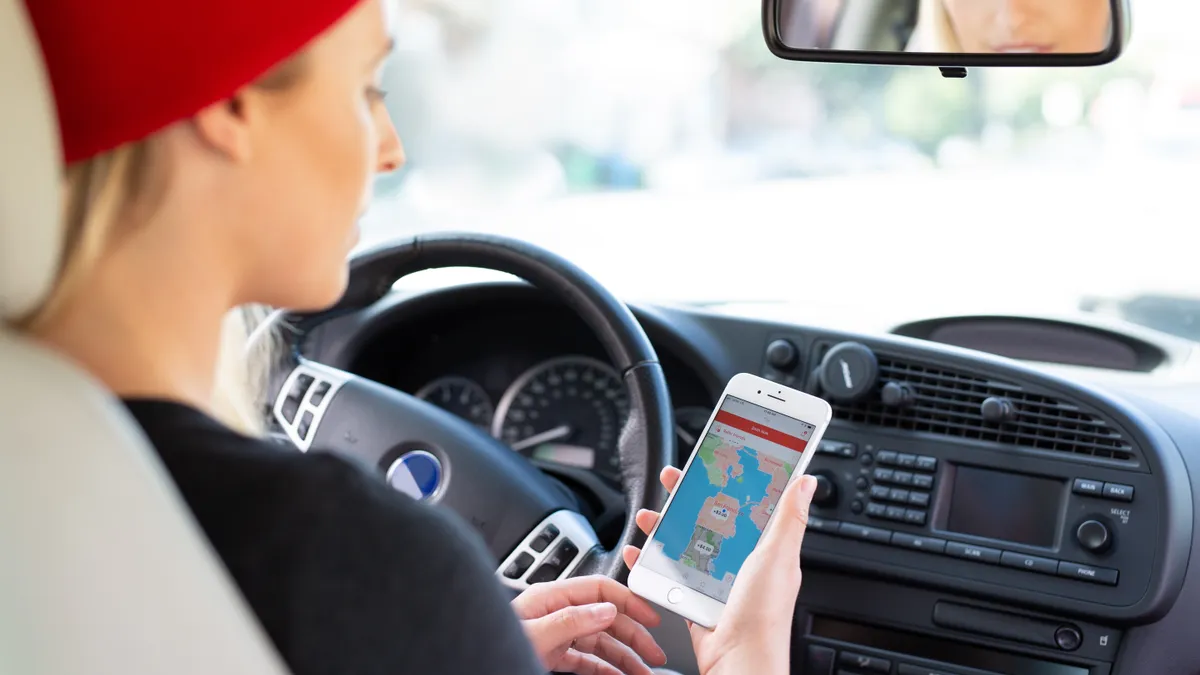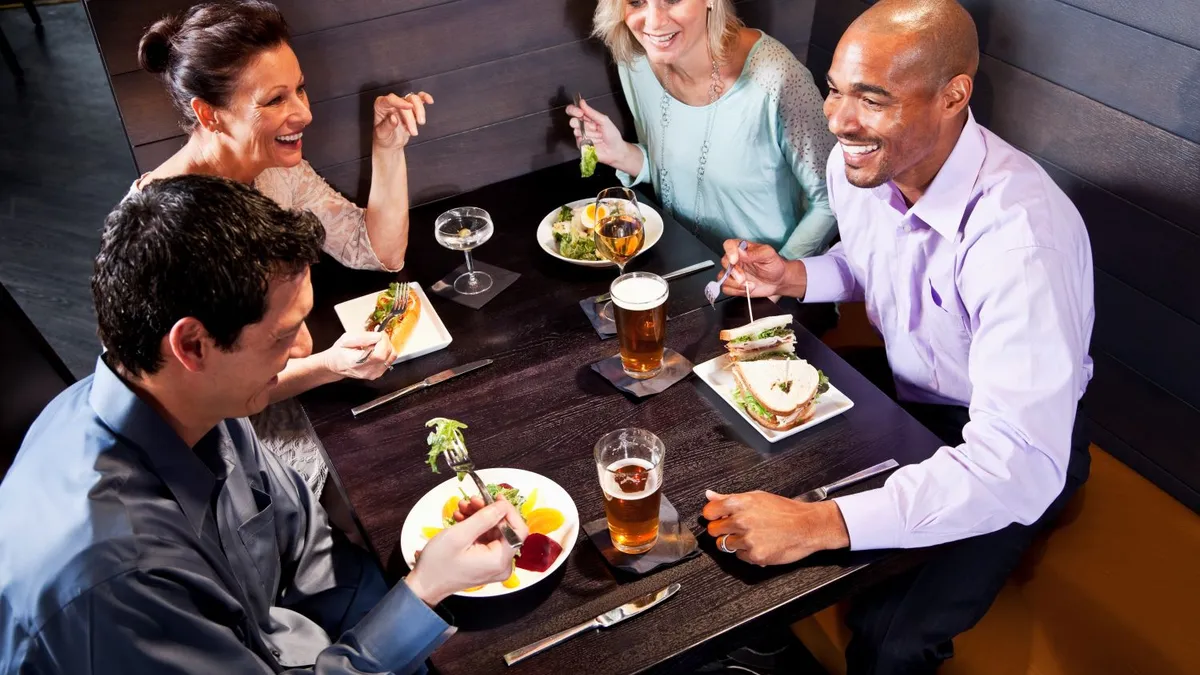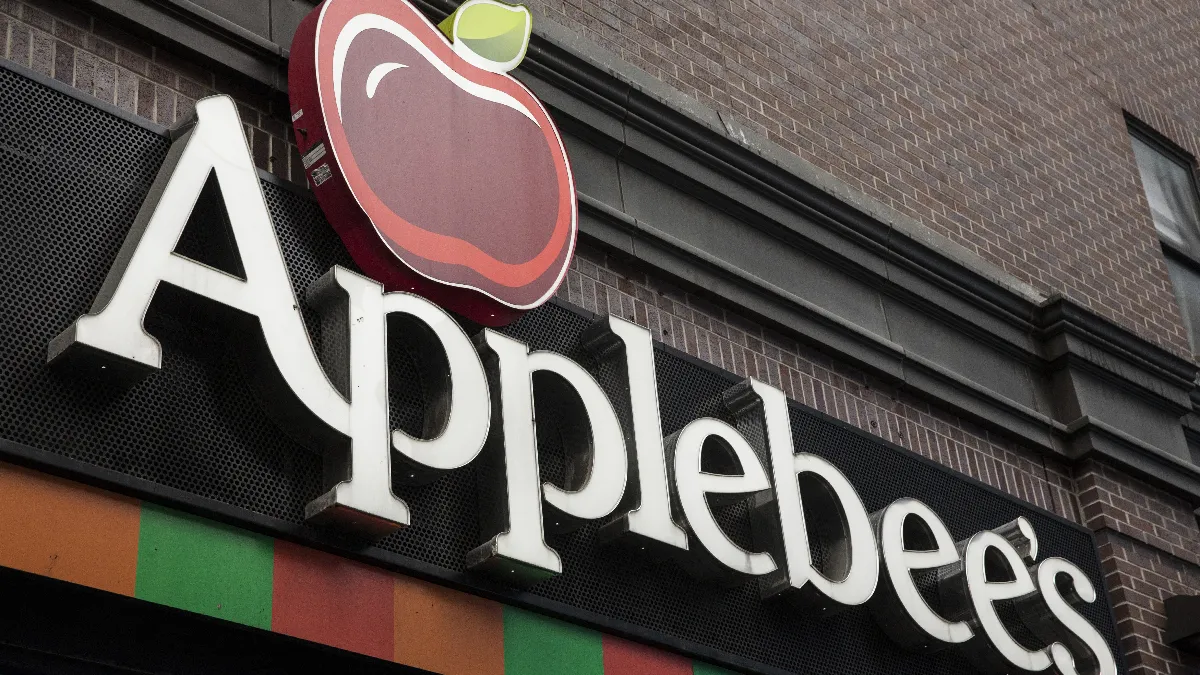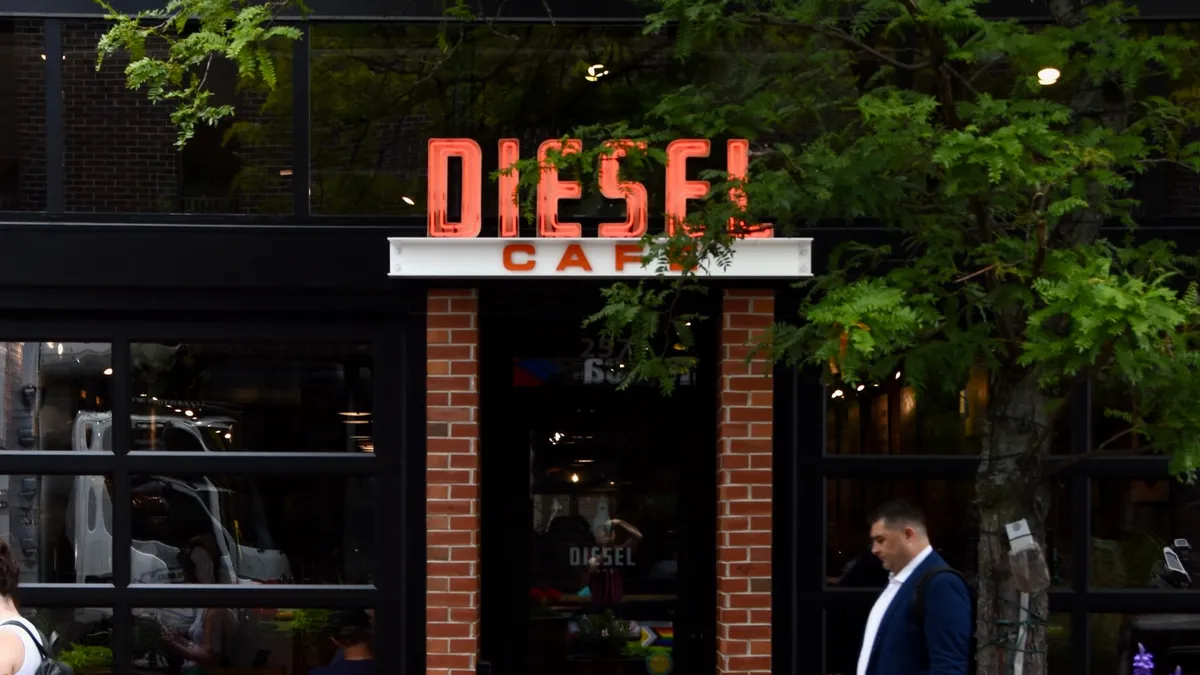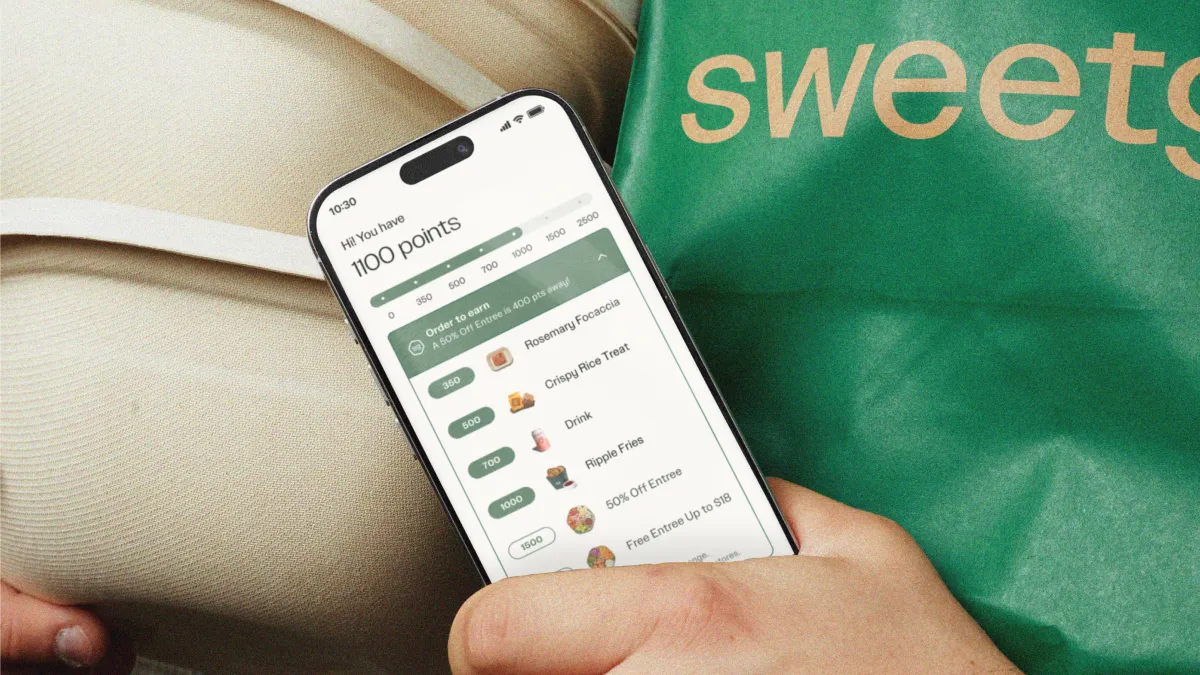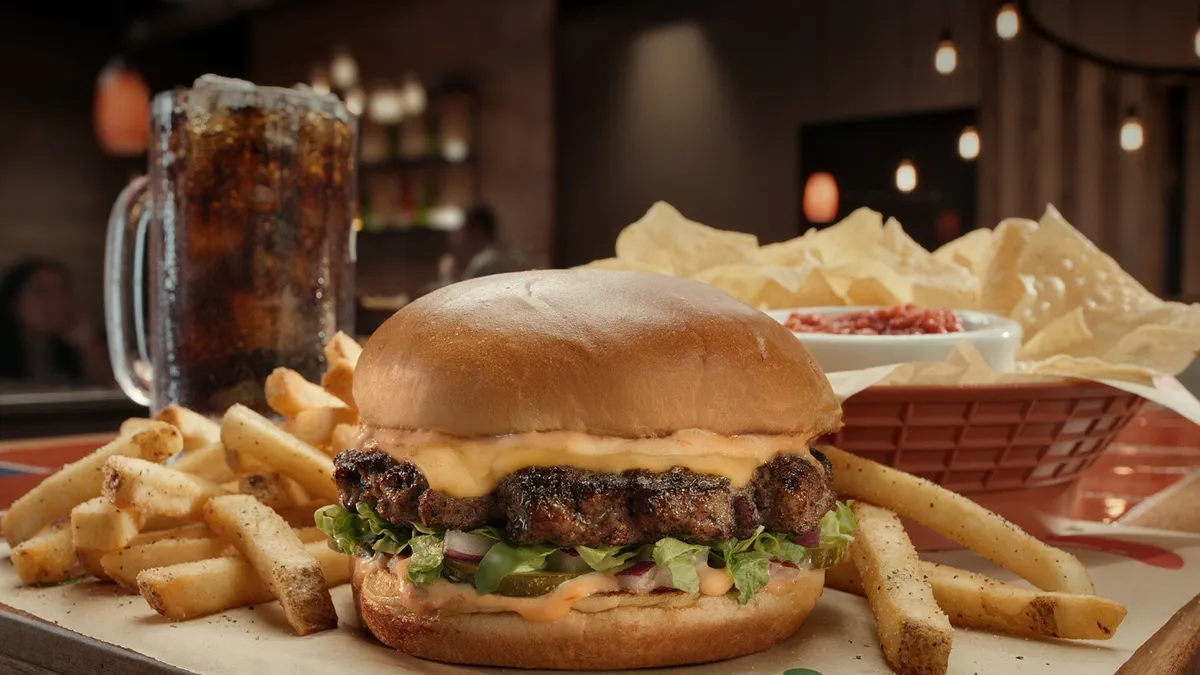While the restaurant industry tries to keep pace with the rapidly growing delivery channel, a disconnect is forming between what consumers want and what operators provide. That is at least according to Toast's recently released Restaurant Report 2019.
Take use of third-party delivery services as an example. According to the report, most restaurants (57%) use DoorDash, while just 21% of consumers do. The disparity applies to Uber Eats and Grubhub as well. Fifty-two percent of restaurants use Uber Eats versus 35% of consumers; 51% of restaurants offer Grubhub, while 26% of consumers order from it. Notably, Postmates was not included in the Toast research, but was the No. 4 most popular app behind the top three in another newly released report from US Foods.
This is quite a discrepancy considering DoorDash surpassed Grubhub and Uber Eats in March for the most market share. Despite DoorDash's growth, Grubhub (Yum Brands) and Uber Eats (McDonald's, Starbucks) gained a solid footprint early from their big-brand partnerships. In fact, according to KeyBanc Capital Markets, the largest restaurant chains saw an average increase of 25% since February across the four largest delivery aggregates, outpacing the overall category's 10% growth during that same period.
However, this aggregate usage will likely change, and fast, as DoorDash's model is attracting deep-pocketed investors and big-named brands of its own. McDonald's recently ended its exclusive partnership with Uber Eats to add DoorDash to its portfolio, for example, while Chick-fil-A added DoorDash in late 2018 — two major wins for the delivery company. This continuous movement illustrates a much larger narrative happening in the space: competition is intense and the only constant, especially as restaurant brands figure out how to efficiently implement delivery, is change.
Navigation by trial and error
The best way to navigate that change is to embrace trial and error, according to Tejas Kataria, senior manager of strategic partnerships at Toast. McDonald's did just that when it expanded beyond its Uber Eats exclusivity after two years. The quick-service giant could very well do something different a year from now. That's the nature of working in a fast-moving category.
"You should have multiple aggregators so you can evaluate which channel works best for your brand," Kataria told Restaurant Dive. "We believe that restaurateurs should experiment with multiple partners and branded marketing strategies to see which mix works within their restaurant footprint."
"Delivery companies are an extension of the restaurant brand, so it’s important to evaluate the company, the quality of the driver network and the scope of the consumer footprint."

Tejas Kataria
Senior manager of strategic partnerships, Toast
As with any emerging technology or market, there will always be pros and cons. Keeping this in mind when selecting a third-party partner, the tradeoff is the cost of acquiring new customers via a commission rate to the aggregator versus the ability to retain that customer and transition them to lower cost options such as branded ordering channels.
"Delivery companies are an extension of the restaurant brand, so it's important to evaluate the company, the quality of the driver network and the scope of the consumer footprint," Kataria said. "You may find that in your city, certain third-party providers have stronger consumer networks than others."
This may, at least in part, explain the report's discrepancy between consumer and restaurant usage. The difference between restaurants and customers regarding third-party delivery apps also shows that customers are platform-loyal, which makes it even more important for restaurants to be represented across multiple third-party platforms.
"This not only diversifies the restaurants' customer bases, it also has been shown to have a direct correlation with an increase in revenue," Chowly co-founder Sterling Douglas said in the report.
Aside from finding the right aggregators to work with, another challenge for restaurant brands is ensuring that those aggregators don't turn into competitors by taking control of the consumer data or by serving as a marketplace promoting other choices.
"[Third-party aggregators] are in a good spot. As a busy consumer, I am often not sure what I want and I don't have a lot of time. I think about what's in the area and the aggregator has it all there for me. It's easy," Hope Neiman, chief marketing officer at Tillster, told Restaurant Dive.
Indeed, 85% of consumers don't know what they want for dinner just hours before mealtime, so aggregators not only provide the convenience of delivery, but also help with the decision-making process for a big chunk of people.
To counter this advantage, many restaurant brands are investing big money into their own apps. According to the National Restaurant Association's State of the Restaurant Industry Report, 70% of quick-service operators plan to devote more resources this year to customer-facing, service-based technology. By honing their focus on their own channels, brands can better work with aggregates instead of ceding full control over the entire customer journey.
"If you ensure delivery in your own app, you can control the relationship with your customer. You're never going to eliminate the aggregator, but you can take a bigger wallet share and, even bigger, own the data."

Hope Neiman
Chief marketing officer, Tillster
"For restaurateurs, we think now is the time to invest in branded digital experiences," Kataria said. "This will better position them to evaluate third-party delivery partners as a source to acquire potential new customers. In this emerging channel, it's critically important to think about the cohesive experience and necessary steps to transition these customers to a direct relationship with the brand."
Millennials specifically are more interested in ordering from an aggregate site, so a restaurant's first priority should be offering a seamless ordering experience through their digital channels, as well as whatever aggregate fits best within their brand.
"If you ensure delivery in your own app, you can control the relationship with your customer," Neiman said. "You're never going to eliminate the aggregator, but you can take a bigger wallet share and, even bigger, own the data."
Aligning consumer and restaurant values
While delivery was once a convenience, it is now quickly turning into an expectation. What consumers expect, however, vastly differs from what restaurants prioritize, according to the Toast report. Consumers put a premium on speed far more than restaurants (77% versus 57%), as well as value, such as low delivery fees (74% versus 49%). Conversely, restaurants care more about driver tracking (40% versus 10%) and loyalty points from delivery (22% versus 6%) at higher rates than diners. These priorities need to be more aligned for a restaurant brand to succeed, Neiman said.
"The bottom line is that people are willing to pay for delivery, so delivery is a constant land grab and those that are successful are the ones that meet the consumers' expectations," she said.
So while it makes sense for restaurants to focus on loyalty, speed and value should hold equal weight. It's a challenging paradox for operators.
"Delivery drivers through aggregators are, in essence, extensions of your brand," Kataria said. “Diners care most about how fast it gets delivered, and restaurateurs care most about the quality of food when it gets delivered.”
Both are right. A study from market research firm Zion & Zion found that 62% of consumers who receive a bad food delivery experience, whether slow or compromised quality or something else, co-blame the restaurant and the delivery company.
How can operators strike a balance? By thinking like the younger consumer set that most depends on delivery, Kataria said.
"The majority of consumers using delivery and online ordering do so 'like a millennial,'" he said. "They want their food on-demand and their orders to be customizable. Restaurants that want to engage in delivery should not offer menu items that do not cater to this experience."


